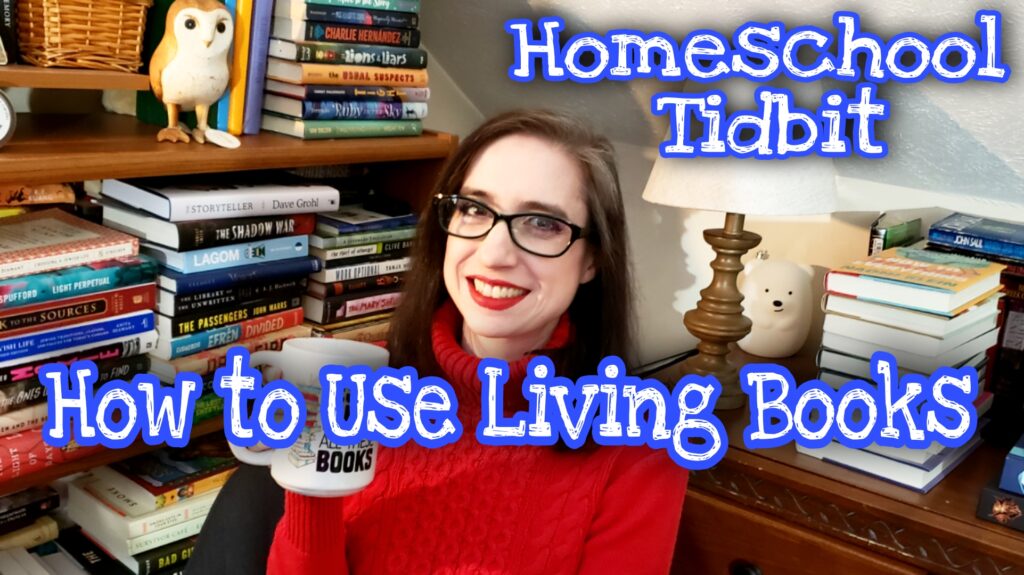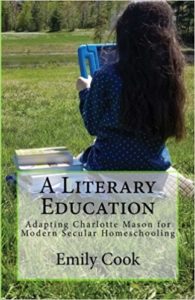Homeschool Tidbits: How to Use Living Books
January 21, 2022
 Welcome to Build Your Library’s “Homeschool Tidbits: Episode 3 – How to Use Living Books”. In this new weekly video series, I will delve briefly into a topic related to homeschooling and will share some of my knowledge and expertise as a long-time homeschooling mother of 4 children. Three of whom have graduated!
Welcome to Build Your Library’s “Homeschool Tidbits: Episode 3 – How to Use Living Books”. In this new weekly video series, I will delve briefly into a topic related to homeschooling and will share some of my knowledge and expertise as a long-time homeschooling mother of 4 children. Three of whom have graduated!
Last week I gave you the definition of a living book and a simple test to help you choose them in your homeschool. But now you have a big stack of wonderful literature ready to go. So now what? Today I’m going to give you some tips to help you integrate living books into your homeschool routine.
Living Books Basics
Let’s talk first about the basics. Where do these living books fit into your homeschool day? Particularly in the elementary years, you can teach subjects like history and science completely from living books. I recommend choosing a good spine text for your foundation. A spine book is one that forms the backbone of your study. So, for example, if you are learning about ancient history, you could use History Quest: Ancient Times as your spine and then build from there. There are also numerous science and history encyclopedias that you could use as a spine as well.
But don’t overdo it! When it comes to living books in a Charlotte Mason homeschool, less is more. You want quality over quantity. I know that sounds absurd coming from me – a person who collects books and has a house brimming with literature. But it’s true. We want our children to have time to really savor the book and ponder its ideas. That can’t happen if you are flying through a book a day to get through a huge stack of living books. That’s where slow reading comes in.
“It is a sad fact that we are losing our joy in literary form. We are in such haste to be instructed by facts or titillated by theories, that we have no leisure to linger over the mere putting of a thought.” ~ Charlotte Mason
Living Books Plan
You should plan to spend a few weeks to a month on a really good book. For some voracious readers, that might seem incredibly slow. But when you are given the chance to take your time and really sit with a book for a while, you will be amazed at the way you find yourself living within that book – thinking about it and talking about it far more than if you’d just plowed through it in a day or two. You’ll also find that that story now sticks in your mind better because you spent so much more time with it.
Besides lingering over books, we want to encourage our children to make their own connections. Try to refrain from pointing everything out to your child as you read. It is tempting to insert your own thoughts and ideas, but you want them to come to their thoughts on their own. Remember, you are coming to that story with a very different life experience than your child. They may not notice the same things as you, but that doesn’t mean they are reading it incorrectly. They might notice things that you completely missed!
“I think we owe it to children to let them dig their knowledge, of whatever subject, for themselves out of the “fit” book; and this for two reasons. What a child digs for is his own possession; what is poured into his ear, like the idle song of a pleasant singer, floats out as lightly as it came in, and is rarely assimilated.” ~ Charlotte Mason
Living Books Discussions
That doesn’t mean you can’t share your opinions. One of the best parts of teaching this way is getting to have great big juicy discussions over the books we read. And that means I get to participate too. BUT you want them to start those conversations and share their thoughts first. How do you get them to do that without having to guide the conversation?
First and foremost, we want to choose books to share with our children that they will love. Knowing your child and their tastes will go a long way towards choosing books they will be excited about reading. If they love magic, fantasy or playing pretend, you will want to choose books with those elements in the story. If they prefer real-life situations and non-fiction, you will want to pick books that are set firmly in reality. That’s not to say we can’t expand their tastes, but start with what you know will be a win and build from there.
If you pick books that you know they will love, they will be more inclined to have things to say about the story.
What if they struggle to talk about the story? You don’t want to assert your own thoughts, so how do you start? Ask open-ended questions. Never simply ask your child if they like the book. That is a yes or no question and likely won’t amount to more than that one-word answer. Instead, I might ask things like: “What does the main character want?” “How are they trying to get it?” “Why do you think the character made that decision? What might you have done in their place?”
Questions like these force your child to really think about what they read. Whenever possible, I like to ask my children to put themselves into the story. What would they do differently? How might they handle the situations the main character has to navigate? This way, they are making their own connections and forming their own ideas without hearing my input.
Coming up next…
Now you know how to choose living books and how to implement them in your homeschool. Next week, I’m going to share one more living books episode and wrap up by giving recommendations for great living books across different subjects! Until then, happy reading!
See Also:
Charlotte Mason in the Secular Homeschool
A Literary Education book
About Build Your Library
Homeschool Tidbits: Build Your Library’s Weekly Video Blog Series
 Emily Cook is the author and creator of the secular homeschool curriculum Build Your Library, a literature-based K-12 program infused with the teachings of Charlotte Mason. She writes full-year lesson plans as well as shorter topical unit studies. Emily has been homeschooling her four children in Southern NH for 21 years. She is passionate about reading aloud to children of all ages and loves to share her love of literature with others. She and her family also make incredibly dorky videos about homeschooling, books, and more on Youtube at ARRRGH! Schooling. You can follow her on Facebook, Twitter, and Pinterest. You can also check out her author page on Amazon.
Emily Cook is the author and creator of the secular homeschool curriculum Build Your Library, a literature-based K-12 program infused with the teachings of Charlotte Mason. She writes full-year lesson plans as well as shorter topical unit studies. Emily has been homeschooling her four children in Southern NH for 21 years. She is passionate about reading aloud to children of all ages and loves to share her love of literature with others. She and her family also make incredibly dorky videos about homeschooling, books, and more on Youtube at ARRRGH! Schooling. You can follow her on Facebook, Twitter, and Pinterest. You can also check out her author page on Amazon.
